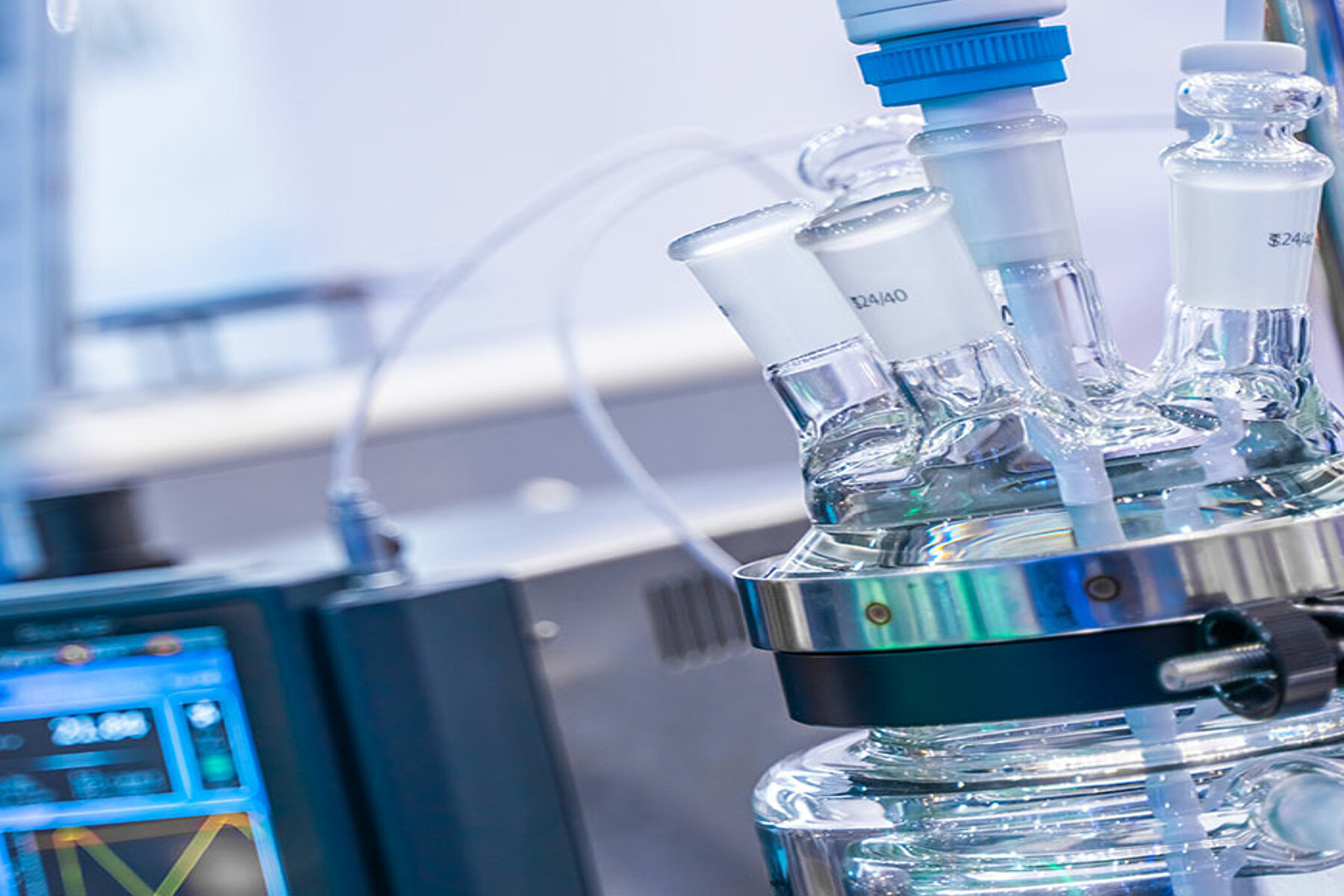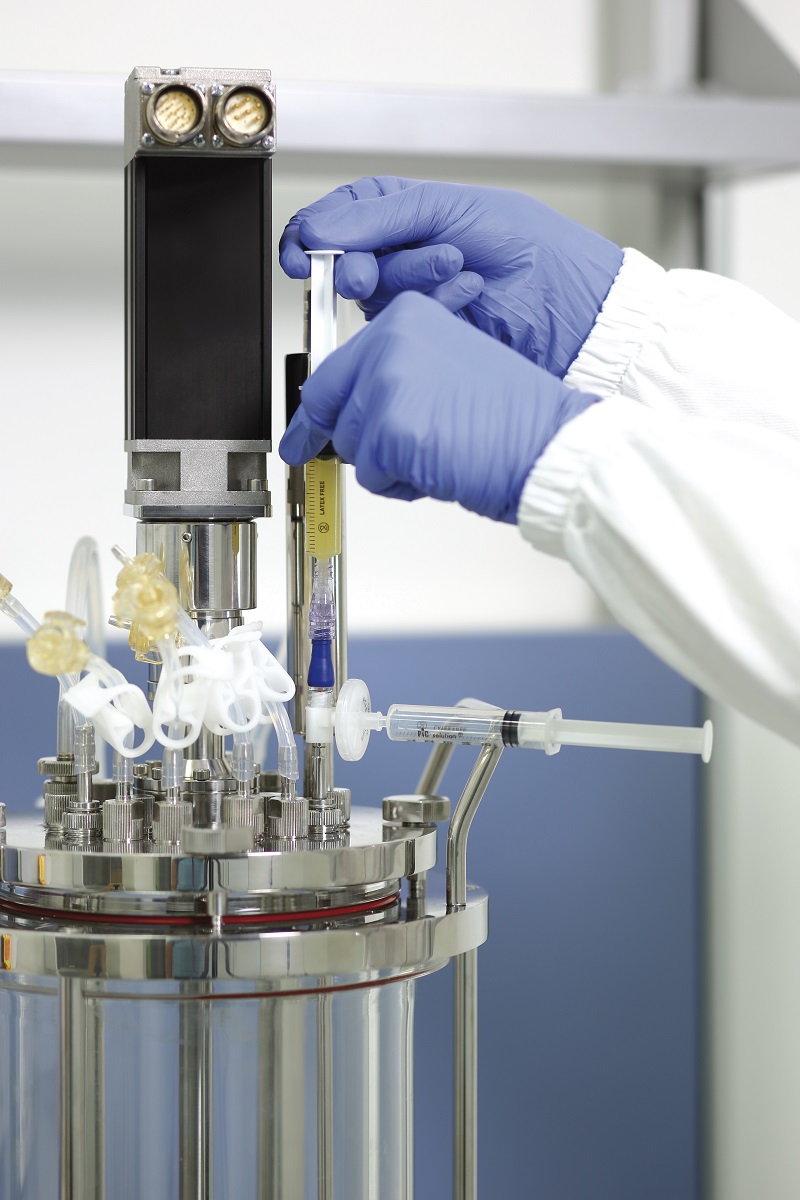Bioreactors Presentation
| Introduction to Bioreactors | ||
|---|---|---|
| Bioreactors are devices used to cultivate and control the growth of biological cells or organisms. They provide optimal conditions for cell growth, such as temperature, pH, and nutrient supply. Bioreactors are widely used in biotechnology, pharmaceutical, and food production industries. | ||
| 1 | ||
| Types of Bioreactors | ||
|---|---|---|
| Stirred tank bioreactors are the most common type, with an agitator to mix the culture and ensure uniform conditions. Packed bed bioreactors use a solid support matrix for cell attachment and growth. Membrane bioreactors employ a semi-permeable membrane to separate cells from the culture medium. | ||
| 2 | ||
| Features of Bioreactors | ||
|---|---|---|
| Bioreactors have sensors to monitor and control parameters like temperature, pH, dissolved oxygen, and agitation speed. They often have aeration systems to provide oxygen to the cells for respiration. Bioreactors can be operated in batch, fed-batch, or continuous mode to optimize cell growth and product yield. | ||
| 3 | ||
| Applications of Bioreactors | ||
|---|---|---|
| Bioreactors are used in the production of therapeutic proteins, vaccines, and antibiotics. They are essential for tissue engineering and regenerative medicine, enabling the growth of artificial organs or tissues. Bioreactors play a crucial role in wastewater treatment, helping to break down organic matter and remove pollutants. | ||
| 4 | ||
| Advantages of Bioreactors | ||
|---|---|---|
| Bioreactors provide a controlled environment, allowing for reproducible and scalable production. They enable higher cell densities and product yields compared to traditional methods. Bioreactors reduce the risk of contamination and ensure the production of high-quality products. | ||
| 5 | ||
| Challenges in Bioreactor Design | ||
|---|---|---|
| Scaling up bioreactor processes can be complex, as maintaining uniform conditions becomes more challenging. Optimal nutrient supply and oxygenation must be carefully balanced to avoid cell stress or limitations. Controlling shear forces and avoiding cell damage during agitation is crucial for maintaining cell viability. | ||
| 6 | ||
| Future Trends in Bioreactors | ||
|---|---|---|
| Single-use bioreactors are gaining popularity due to their flexibility, cost-effectiveness, and reduced contamination risk. Integration of artificial intelligence and advanced sensors will enable real-time monitoring and optimization of bioreactor processes. Development of miniaturized and portable bioreactors will allow for on-site or point-of-care applications. | ||
| 7 | ||
| Environmental Impact of Bioreactors | ||
|---|---|---|
| Bioreactors can contribute to sustainable practices by reducing the reliance on non-renewable resources and minimizing waste generation. They can be used for the production of biofuels and bioplastics, reducing greenhouse gas emissions. Bioreactors aid in the remediation of contaminated soil and water, promoting environmental restoration. | ||
| 8 | ||
| Ethical Considerations in Bioreactors | ||
|---|---|---|
| The use of bioreactors raises ethical concerns related to the manipulation of living organisms and potential misuse of technology. Ensuring informed consent and respecting cultural and religious beliefs is essential in tissue engineering and regenerative medicine. Proper disposal and management of bioreactor wastes should be considered to prevent environmental harm. | ||
| 9 | ||
| Conclusion | ||
|---|---|---|
| Bioreactors are powerful tools in biotechnology and industries, enabling controlled cultivation of cells and organisms. They offer numerous advantages, including improved productivity, scalability, and reduced contamination risk. As technology advances, bioreactors will play a crucial role in addressing global challenges and promoting sustainable practices. | ||
| 10 | ||
| References (download PPTX file for details) | ||
|---|---|---|
| Reference 1: [Insert reference details]... Reference 2: [Insert reference details]... Reference 3: [Insert reference details]... |  | |
| 11 | ||









